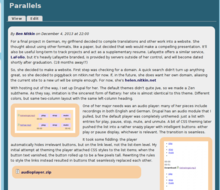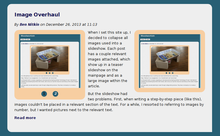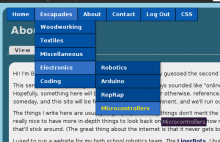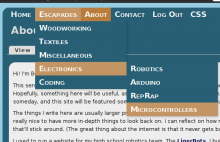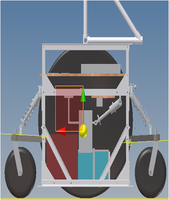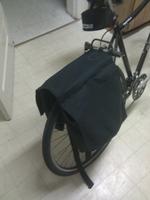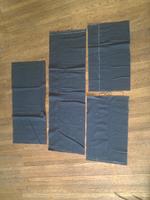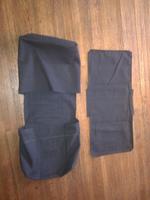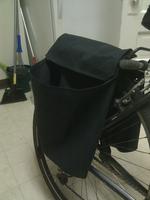"Pannier" means two things. A pannier is either the thing that women wore in the 18th century to make their dresses all floofey or it's a type of luggage carried on the side of a vehicle or beast of burden. Needless to say, I'm working with the second sort.
A while ago - say, two years, I got a rack for my bicycle. The rack included a pannier, which was terrifically exciting. It had a center compartment where I took to carrying some basic tools and a reflective vest, and two zipper side pockets that could hold a fair volume. It was great, being able to take my bike grocery shopping or to use the side bags to carry books.
Like all cheap things, though, the bag broke. The side pouches were made from nylon and the seams just pulled right out. Ditto for the center bag - the floor and walls had an argument (or something) and came detached from each other.
Yesterday, I passed a 1 yard remnant (that means cheap) of duck canvas in a craft store. I'd been looking to make myself a set of bags for a while, and this seemed just the chance. (Plus, it was black. I love black.)
Today, I started making the thing. I passed up a few designs for being too bulky or too simple, then found a nice one at bit-of-green.com. The design was simple but usable, light but durable, and easy to modify to taste. Plus, the author included readable set of plans.
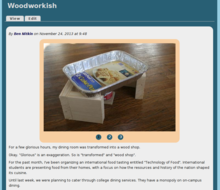 When I set this site up, I decided to collapse all images used into a slideshow. Each post has a couple relevant images attached, which show up in a teaser slideshow on the mainpage and as a large image within the article.
When I set this site up, I decided to collapse all images used into a slideshow. Each post has a couple relevant images attached, which show up in a teaser slideshow on the mainpage and as a large image within the article. 
